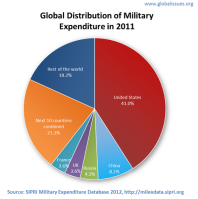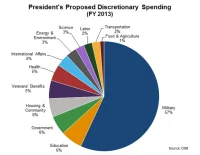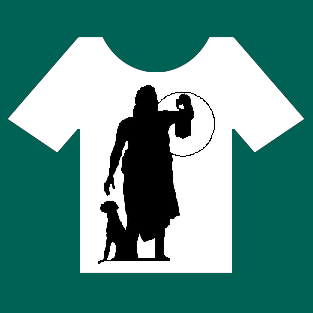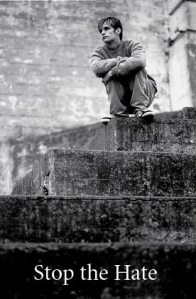THE ATOMIC BOMBING OF HIROSHIMA: WHY?…
The basic moral decision that the Americans had to make during [World War II] was whether or not they would violate international law by indiscriminately attacking and destroying civilians, and they resolved that dilemma within the context of conventional weapons. Neither fanfare nor hesitation accompanied their choice, and in fact the atomic bomb used against Hiroshima was less lethal than massive fire bombing.
— American historian Gabriel Kolko, The Politics of War (1990), pp. 539–40.
…in [July] 1945… Secretary of War Stimson, visiting my headquarters in Germany, informed me that our government was preparing to drop an atomic bomb on Japan. I was one of those who felt that there were a number of cogent reasons to question the wisdom of such an act… the Secretary, upon giving me the news of the successful bomb test in New Mexico, and of the plan for using it, asked for my reaction, apparently expecting a vigorous assent.
During his recitation of the relevant facts, I had been conscious of a feeling of depression and so I voiced to him my grave misgivings, first on the basis of my belief that Japan was already defeated and that dropping the bomb was completely unnecessary, and secondly because I thought that our country should avoid shocking world opinion by the use of a weapon whose employment was, I thought, no longer mandatory as a measure to save American lives. It was my belief that Japan was, at that very moment, seeking some way to surrender with a minimum loss of ‘face’. The Secretary was deeply perturbed by my attitude…
— Dwight D. Eisenhower, Mandate For Change, p. 380
…the Japanese were ready to surrender and it wasn’t necessary to hit them with that awful thing.
— Dwight D. Eisenhower, “Ike on Ike”, Newsweek, 11 November 1963.
It is my opinion that the use of this barbarous weapon at Hiroshima and Nagasaki was of no material assistance in our war against Japan. The Japanese were already defeated and ready to surrender because of the effective sea blockade and the successful bombing with conventional weapons.
The lethal possibilities of atomic warfare in the future are frightening. My own feeling was that in being the first to use it, we had adopted an ethical standard common to the barbarians of the Dark Ages. I was not taught to make war in that fashion, and wars cannot be won by destroying women and children.
— Admiral William D. Leahy, the Chief of Staff to Presidents Franklin Roosevelt and Harry S. Truman, I Was There, p. 441.
I think that the Japanese were ready for peace, and they already had approached the Russians and, I think, the Swiss. And that suggestion of [giving] a warning [of the atomic bomb] was a face-saving proposition for them, and one that they could have readily accepted.
(…)
In my opinion, the Japanese war was really won before we ever used the atom bomb. Thus, it wouldn’t have been necessary for us to disclose our nuclear position and stimulate the Russians to develop the same thing much more rapidly than they would have if we had not dropped the bomb.
— Under Secretary of the Navy Ralph Bird, “War Was Really Won Before We Used A-Bomb”, U.S. News and World Report, 15 August 1960, pp. 73-75.
The Japanese had, in fact, already sued for peace before the atomic age was announced to the world with the destruction of Hiroshima and before the Russian entry into war… The atomic bomb played no decisive part, from a purely military standpoint, in the defeat of Japan.
— Fleet Admiral Chester W. Nimitz, Commander in Chief of the U.S. Pacific Fleet, The New York Times, 6 October 1945.
Major General Curtis E. LeMay: The war would have been over in two weeks without the Russians entering and without the atomic bomb.
The Press: You mean that, sir? Without the Russians and the atomic bomb?
LeMay: The atomic bomb had nothing to do with the end of the war at all.
— Press conference on 20 September 1945, reported in The New York Herald Tribune; quoted in Gar Alperovitz, The Decision To Use the Atomic Bomb, p. 336.
The first atomic bomb was an unnecessary experiment… It was a mistake to ever drop it… [the scientists] had this toy and they wanted to try it out, so they dropped it… It killed a lot of Japs, but the Japs had put out a lot of peace feelers through Russia long before.
— Admiral William F. Halsey, Jr., Commander U.S. Third Fleet, public statement in 1946; quoted in Gar Alperovitz, The Decision To Use the Atomic Bomb, p. 331.
The greatest obstacle to unconditional surrender by the Japanese is their belief that this would entail the destruction or permanent removal of the Emperor and the institution of the Throne. If some indication can now be given the Japanese that they themselves, when once thoroughly defeated and rendered impotent to wage war in future, will be permitted to determine their own future political structure, they will be afforded a method of saving face without which surrender will be highly unlikely.
(…)
Those who hold that the Emperor and the institution of the Throne in Japan are the roots of their aggressive militarism can hardly be familiar with the facts of history…
— Acting Secretary of State Joseph C. Grew in conversation with President Truman on 28 May 1945; quoted in United States Department of State / Foreign relations of the United States : diplomatic papers, 1945. The British Commonwealth, the Far East, pp. 545-46.
His Majesty the Emperor, mindful of the fact that present war daily brings greater evil and sacrifice upon peoples of all belligerent powers, desires from his heart that it may be quickly terminated. But so long as England and United States insist upon unconditional surrender in Great East Asian War, Empire has no alternative but to fight on with all its strength for honour and existence of Motherland. His Majesty is deeply reluctant to have any further blood lost among people on both sides and it is his desire, for welfare of humanity, to restore peace with all possible speed…
It is the Emperor’s private intention to send Prince Konoe to Moscow as a Special Envoy with a letter from him containing the statements given above. Please inform [Soviet Foreign Commissar] Molotov of this and get the Russians’ consent to having the party enter the country.
— Text of message from Japanese Foreign Minister Togo Shigenori to Japan’s Ambassador Sato in Moscow for delivery to the Russians before the Potsdam conference opened, intercepted on 12 July 1945 and decoded by the U.S. Navy; quoted in Tsuyoshi Hasegawa, Racing the Enemy, p. 124. The intercept was rushed to Potsdam on 13 July 1945 in a locked pouch. The significance of this latest intercept was not lost on the few Americans privileged to read it, among them Navy secretary James V. Forrestal; the pages of his diary relating to it were removed after his death and classified top secret for the next thirty years.
Influential press and radio commentators are increasingly calling for a statement to supplement — or to succeed — the “unconditional surrender” formula; and public opinion polls indicate considerable willingness to accept less than unconditional surrender, since nearly a third of the nation would “try to work out a peace” with Japan on the basis of Japanese renunciation of all conquests… These polls also suggest that a considerable portion of the public would not insist upon the conquest of the Japanese homeland before any effort is made to reach a peace settlement — provided Japanese power is ended in the Pacific islands and in Asia.
— A study by the State Department Office of Public Opinion Studies on “Current Public Attitudes Toward the Unconditional Surrender of Japan” dated 16 July 1945; quoted in Gar Alperovitz, The Decision To Use the Atomic Bomb.
Generalissimo Joseph Stalin: Last night the Russian delegation was given a copy of the Anglo-American declaration [the Potsdam Proclamation] to the Japanese people. We think it our duty to keep each other informed. I inform the Allies of the message that I received from the Japanese Emperor through the Japanese ambassador. I sent a copy of my answer to this peace plea which was in the negative. I received another communication informing me more precisely of the desire of the Emperor to send a peace mission headed by Prince Konoye who was stated to have great influence in the Palace. It was indicated that it was the personal desire of the Emperor to avoid further bloodshed [see above]… Our answer of course will be negative.
President Truman: I appreciate very much what the Marshal has said.
— Conversation during the Potsdam Conference on 28 July 1945; quoted in United States Department of State / Foreign relations of the United States: diplomatic papers: the Conference of Berlin (the Potsdam Conference), 1945, p. 467. Truman, to whom all this was known from the codebreakers anyway, immediately changed the subject.
…the Potsdam declaration in July, demand[ed] that Japan surrender unconditionally or face “prompt and utter destruction.” MacArthur was appalled. He knew that the Japanese would never renounce their emperor, and that without him an orderly transition to peace would be impossible anyhow, because his people would never submit to Allied occupation unless he ordered it. Ironically, when the surrender did come, it was conditional, and the condition was a continuation of the imperial reign. Had the General’s advice been followed, the resort to atomic weapons at Hiroshima and Nagasaki might have been unnecessary.
— William Manchester, American Caesar: Douglas MacArthur 1880-1964, p. 512.
MacArthur’s views about the decision to drop the atomic bomb on Hiroshima and Nagasaki were starkly different from what the general public supposed… When I asked General MacArthur about the decision to drop the bomb, I was surprised to learn he had not even been consulted. What, I asked, would his advice have been? He replied that he saw no military justification for the dropping of the bomb. The war might have ended weeks earlier, he said, if the United States had agreed, as it later did anyway, to the retention of the institution of the emperor.
— Norman Cousins, a consultant to General MacArthur during the American occupation of Japan, The Pathology of Power, pp. 65, 70-71.
I have always felt that if, in our ultimatum to the Japanese government issued from Potsdam [in July 1945], we had referred to the retention of the emperor as a constitutional monarch and had made some reference to the reasonable accessibility of raw materials to the future Japanese government, it would have been accepted. Indeed, I believe that even in the form it was delivered, there was some disposition on the part of the Japanese to give it favorable consideration. When the war was over I arrived at this conclusion after talking with a number of Japanese officials who had been closely associated with the decision of the then Japanese government, to reject the ultimatum, as it was presented. I believe we missed the opportunity of effecting a Japanese surrender, completely satisfactory to us, without the necessity of dropping the bombs.
— John McCloy, Assistant Secretary of War; quoted in James Reston, Deadline, p. 500.
[A clearer assurance that the Emperor would not be displaced] was omitted from the Potsdam declaration and as you are undoubtedly aware was the only reason why it was not immediately accepted by the Japanese who were beaten and knew it before the first atomic bomb was dropped.
— Rear Admiral L. Lewis Strauss, in a private letter to Navy historian Robert G. Albion; quoted in Gar Alperovitz, The Decision To Use the Atomic Bomb, p. 393.
If we consider international agreement on total prevention of nuclear warfare as the paramount objective, and believe that it can be achieved, this kind of introduction of atomic weapons [on Japan] to the world may easily destroy all our chances of success. Russia… will be deeply shocked. It will be very difficult to persuade the world that a nation which was capable of secretly preparing and suddenly releasing a weapon, as indiscriminate as the rocket bomb and a thousand times more destructive, is to be trusted in its proclaimed desire of having such weapons abolished by international agreement.
…looking forward to an international agreement on prevention of nuclear warfare – the military advantages and the saving of American lives, achieved by the sudden use of atomic bombs against Japan, may be outweighed by the ensuing loss of confidence and wave of horror and repulsion, sweeping over the rest of the world…
From this point of view a demonstration of the new weapon may best be made before the eyes of representatives of all United Nations, on the desert or a barren island. The best possible atmosphere for the achievement of an international agreement could be achieved if America would be able to say to the world, “You see what weapon we had but did not use. We are ready to renounce its use in the future and to join other nations in working out adequate supervision of the use of this nuclear weapon.”
(…)
We believe that these considerations make the use of nuclear bombs for an early, unannounced attack against Japan inadvisable. If the United States would be the first to release this new means of indiscriminate destruction upon mankind, she would sacrifice public support throughout the world, precipitate the race of armaments, and prejudice the possibility of reaching an international agreement on the future control of such weapons. [emphasis in original]
— Memorandum on “Political and Social Problems” from Members of the “Metallurgical Laboratory” of the University of Chicago to Sec. of War Henry Stimson [“The Franck Report“], dated 12 June 1945, U.S. National Archives, Washington D.C.: Record Group 77, Manhattan Engineer District Records, Harrison-Bundy File, folder #76.
I don’t believe in speculating on the mental feeling and as far as the bomb is concerned I ordered its use for a military reason — for no other cause — and it saved the lives of a great many of our soldiers. That is all I had in mind.
— President Harry S. Truman; excerpt from Transcript of Interview by William Hillman and Morton Roysewith with former President Truman, Post-Presidential File, ca. 1955, Truman Papers, Harry S. Truman Library.
The atomic bomb… is far worse than gas and biological warfare because it affects the civilian population and murders them by the wholesale.
— Harry S. Truman to Thomas Murray, 19 January 1953, President’s Secretary’s Files (PSF), Harry S. Truman Library.



On this date during World War II, at 8:15 AM local time an American B-29 bomber dropped the world’s first deployed atomic bomb, dubbed “Little Boy”, over the Japanese city of Hiroshima. The explosion wiped out 90 percent of the city and immediately killed 80,000 people; tens of thousands more would later die of radiation exposure.
On the same day, Truman released a press statement announcing the atomic bombing, in which he described Hiroshima as an “important Japanese Army base”, when in fact it was a city composed almost entirely of civilians. [As J. Samuel Walker has noted, if Hiroshima had been a more important military target, it likely would have suffered conventional bombing before August 6 — the fact that it was still intact was in part a reflection of its lack of military presence.] Moreover, his statement used terms which described the atomic bomb as similar to a high-explosive weapon, making no mention of the fact that it was also a radiation weapon. Its radiological effects made the atomic bomb worse than poison gas whose use was prohibited by international law.

A photo prepared by U.S. Air Intelligence for analytical work on destructiveness of atomic weapons. The total area devastated by the atomic strike on Hiroshima is shown in the darkened area (within the circle) of the photo. The numbered items are various targets with the percentages of total destruction. Notice that all four of the military targets were far from the aiming point for the atomic strike. (Photo from U.S. National Archives, RG 77-AEC).
In all fairness to Truman, the man most likely was uninformed about the true nature of the atomic bomb. There were certainly physicists who understood that the first atomic bombs would produce significant amounts of radiation and were likely to cause both radiation sickness and nuclear fallout effects. But J. Robert Oppenheimer, scientific director of the Manhattan Project, never seemed to be very interested in that and spoke almost exclusively of the bomb in terms of heat and blast effects. Due to the chain of command, because Oppenheimer didn’t know/care about radiation effects, General Leslie Groves didn’t really, either; if Groves didn’t know/care, then the Target Committee under Groves and the Interim Committee under Secretary of War Henry Stimson didn’t know at all; and if Stimson didn’t know, Truman didn’t know. In fact, after months of public denials that radiation sickness had occurred, Groves famously replied to a question from Senator Millikin at a meeting of the Special Senate Committee on Atomic Energy in late November 1945:
Millikin: General, is there any medical antidote to excessive radiation?
Groves: I am not a doctor, but I will answer it anyway. The radioactive casualty can be of several classes. He can have enough so that he will be killed instantly. He can have a smaller amount which will cause him to die rather soon, and as I understand it from the doctors, without undue suffering. In fact, they say it is a very pleasant way to die. Then, we get down below that to the man who is injured slightly, and he may take some time to be healed, but he can be healed. [emphasis added]

Hiroshima and Nagasaki: Causes and Consequences
Interestingly, Yoshito Matsushige, a 32 year old cameraman for the Chugoku Shimbun, was at home a little over 1.6-miles (2.7 km) south of the hypocenter when the bomb detonated, but he was not seriously injured in the blast. Heading out to the center of the city, Matsushige took the only photographs taken of Hiroshima on that calamitous day. He had two rolls of film with twenty-four possible exposures in the 10 hours he spent wandering the devastated city. He lined up one gripping shot after another but he could push the shutter only seven times. When he was done he returned to his home and developed the pictures in the most primitive way, since every darkroom in the city, including his own, had been destroyed. Under a star-filled sky, with the landscape around him littered with collapsed homes and the center of Hiroshima still smoldering in the distance, he washed his film in a radiated creek and hung it out to dry on the burned branch of a tree. But only five of the seven came out right. There are victims in these images, many of whom no doubt died later, but not a single corpse. Only Matsushige knows what the seventeen photos he didn’t take would have looked like. He later testified:
Even though I too was a victim of the same bomb, I only had minor injuries from glass fragments, whereas these people were dying. It was such a cruel sight that I couldn’t bring myself to press the shutter. Perhaps I hesitated there for about 20 minutes, but I finally summoned up the courage to take one picture. Then, I moved 4 or 5 meters forward to take the second picture… I walked through the section of town which had been hit hardest. I walked for close to three hours. But I couldn’t take even one picture of that central area. There were other cameramen in the army shipping group and also at the newspaper as well. But the fact that not a single one of them was able to take pictures seems to indicate just how brutal the bombing actually was. I don’t pride myself on it, but it’s a small consolation that I was able to take at least five pictures.

A makeshift hospital in Hiroshima after the atomic strike. (Intl Cmte of the Red Cross / hist-02959-31)
A few weeks later, the American military confiscated all of the post-bomb prints, just as they seized the Japanese newsreel footage, “but they didn’t ask for the negatives,” Matsushige said. LIFE magazine published Matsushige’s photos on 29 September 1952, hailing them as the “First Pictures – Atom Blasts Through Eyes of Victims”, breaking the long media blackout on graphic images from Hiroshima and Nagasaki.
On 9 August 1945, a second B-29 dropped another A-bomb on Nagasaki, killing an estimated 40,000 people. On 10 August 1945, the Japanese government sent an official protest over the atomic bombing to the U.S. State Department through the Swiss Legation in Tokyo:
Protest against the Attack of a New-Type Bomb by American Airplane
On the 6th of this month, an airplane of the United States dropped a new-type bomb on the urban district of the city of Hiroshima, and it killed and wounded a large number of the citizens and destroyed the bulk of the city. The city of Hiroshima is an ordinary local city which is not provided with any military defensive preparations or establishments, and the whole city has not a character of a military objective. In the statement on the aerial bombardment in this case, the United States President “Truman” asserts that they will destroy docks, factories and transport facilities.
However, since the bomb in this case, dropped by a parachute, explodes in the air and extends the destructive effect to quite a wide sphere, it is clear to be quite impossible in technique to limit the effect of attack thereby to such specific objectives as mentioned above; and the above efficiency of the bomb in this case is already known to the United States. In the light of the actual state of damage, the damaged district covers a wide area, and those who were in the district were all killed indiscriminately by bomb-shell blast and radiant heat without distinction of combatant or non-combatant or of age or sex. The damaged sphere is general and immense, and judging from the individual state of injury, the bomb in this case should be said to be the most cruel one that ever existed.
It is a fundamental principle of international law in time of war that a belligerent has not an unlimited right in choosing the means of injuring the enemy, and should not use such weapons, projectiles, and other material as cause unnecessary pain; and these are each expressly stipulated in the annex of the Convention respecting the Laws and Customs of War on Land and articles 22 and 23(e) of the Regulations respecting the Laws and Customs of War on Land. Since the beginning of the present World War, the Government of the United States has declared repeatedly that the use of poison or other inhumane methods of warfare has been regarded as illegal by the public opinion in civilized countries, and that the United States would not use these methods of warfare unless the other countries used these first.
However, the bomb in this case, which the United States used this time, exceeds by far the indiscriminate and cruel character of efficiency, the poison and other weapons the use of which has been prohibited hitherto because of such an efficiency. Disregarding a fundamental principle of international law and humanity, the United States has already made indiscriminate aerial bombardments on cities of the Empire in very wide areas, and it has already killed and injured a large number of old people, children, and women and collapsed or burned down shrines, temples, schools, hospital and ordinary private houses.
Also, the United States has used the new bomb in this case which has indiscriminate and cruel character beyond comparison with all weapons and projectile of the past. This is a new offense against the civilization of mankind. The Imperial Government impeaches the Government of the United States in its own name and the name of all mankind and of civilization, and demands strongly that the Government of the United States give up the use of such an inhumane weapon instantly.
Japan’s Emperor Hirohito announced his country’s unconditional surrender in World War II in a radio address at noon on August 15, citing the devastating power of “a new and most cruel bomb.”
The Truman administration made extraordinary and largely successful efforts to manage American public perceptions of the atomic attack. During the American occupation of Japan, MacArthur went to great lengths to prevent journalists visiting ground zero and seeing the effects of the bomb, to prevent photographic images and film of the disaster reaching Americans and Europeans, and to suppress scientific assessments of the radiation damage and its long term effects.

Photos of the Prefectural Industrial Promotion Building before (inset) and after the bombing of Hiroshima. The remains were later preserved as the Hiroshima Peace Memorial, Atomic Bomb Dome or Genbaku Dome.
After World War II, most of Hiroshima would be rebuilt, though one destroyed section was set aside by the City as a reminder to the world of the horrors of nuclear weapons and as a symbol for global peace. This area contains the remains of the Hiroshima Prefectural Industrial Promotion Hall. Since it was located only about 160 meters from the hypocenter, all those inside the building died, but parts of the structure survived the blast. To protect the building from the weather, regular reinforcement and repairs with steel beams and resin injection are performed. Also, frequent seismic assessments and soundness surveys for the dome are implemented.

2013 Hiroshima Peace Memorial Ceremony.
The ruin was named Hiroshima Peace Memorial and was made a UNESCO World Heritage Site in 1996, although China and the United States objected — China because “it was the other Asian countries and peoples who suffered the greatest loss in life and property” and the U.S. because a focus on Japan lacked “historical perspective.” Each August 6, thousands of people gather at Hiroshima Peace Memorial Park to join in interfaith religious services commemorating the anniversary of the bombing. Speeches by the Japanese Prime Minister, the Mayor of Hiroshima City, and the representatives of local children are given; then, a one-minute silence for the victims is observed at 8:15 AM, the time of the explosion.

Original location of the Shinran statue that survived the a-bomb blast.
Even after the atomic bombs were dropped on Japan, no international treaty banning or condemning nuclear warfare has ever been ratified. According to F.W. de Klerk, former president of South Africa, “…despite all the lip service that is given to the ideal of nuclear disarmament, South Africa is the only country that has ever voluntarily dismantled an existing nuclear capability. We did so in 1993 and have learned that true security comes from our ability to solve complex problems peacefully rather than by imagining that we can achieve anything by threatening ultimate destruction.”

Statue of Shinran Shonin between 105th and 106th Streets on Riverside Drive, New York City.
Unlike most of the buildings in Hiroshima, the bronze figure of Shinran Shonin (1173–1263) — the Japanese Buddhist monk who founded Jodo Shinshu (Shin) Buddhism — miraculously survived the devastation. The 15-foot statue had stood 2.5 kilometers northwest from the hypocenter of the detonation of the atomic bomb. It depicts Shinran Shonin in his missionary travel robe as he appeared most of his life propagating the doctrine he developed to reveal the one unobstructed way through which one can become awakened.

Closeup of the face of the Shinran statue.
In 1955, the statue was removed from the Hiroshima park, packed into an enormous wooden crate, and shipped to New York City, where it was presented to the New York Buddhist Church on Riverside Drive near 106th Street in Manhattan as a testament to the devastation of the atomic bomb as well as a symbol for hope and world peace.
On 11 September 1955, just over ten years after the bombing of Hiroshima, D. T. Suzuki — one of the most influential figures in introducing Zen Buddhism to the West — gave an eloquent keynote address at the statue’s unveiling ceremony. In this address, I think Suzuki best answers the question, “Why?”, that I began with:
The present state of things as we are facing everywhere politically, economically, morally, intellectually, and spiritually is no doubt the result of our past thoughts and deeds we have committed as human beings through[out] the whole length of history, through aeons of existence, not only individually but collectively — let me repeat, collectively. As such, we are, every one of us, responsible for the present world situation filled with [its] awesome forebodings. The bombing of Hiroshima was not, after all, the doing of the American armies, but the doing of mankind as a whole, and as such, we, not only the Japanese and Americans but the whole world, are to be held responsible for the wholesale slaughter witnessed ten years ago….
As far as I can see, [we must find] the living Shonin who is surely among us answering to the call of his name; only we have not been able to hear his response, our ears have not yet been fully opened innerly as well as outwardly to [that] still small voice….
We must realize that modern civilization is thoroughly oriented towards dehumanizing humanity in every possible way; that is to say, we are fast turning into robots or statues with no human souls. Our task is to get humanized once more.
The statue stands a few blocks from Columbia University, where much of the atomic bomb program began.
References:
- Gar Alperovitz. The Decision to Use the Atomic Bomb and the Architecture of an American Myth (Vintage, 1995).
- Norman Cousins. The Pathology of Power (W. W. Norton, 1987).
- Dwight D. Eisenhower. Mandate for Change, 1953-1956: The White House Years (Garden City, NY: Doubleday & Co, Inc, 1963).
- Tsuyoshi Hasegawa. Racing the Enemy: Stalin, Truman, and the Surrender of Japan (The Belnap Press of Harvard University Press, 2005).
- Rachel Hiles, “Humanized Once More“, Tricycle, Vol. 20 No. 4 (Summer 2011). Accessed on 12 August 2013.
- Gabriel Kolko. The Politics of War: The World and United States Foreign Policy, 1943–1945 (New York, NY: Random House, 1968; 1990 ed. with new afterword).
- William D. Leahy. I Was There: The Personal Story of the Chief of Staff to Presidents Roosevelt and Truman (Whittlesey House, 1950).
- Doug Long. “Hiroshima: Was It Necessary?” Accessed online on 6 August 2013.
- Sean L. Malloy, “‘A Very Pleasant Way to Die’: Radiation Effects and the Decision to Use the Atomic Bomb against Japan”, Diplomatic History Vol. 36 No. 3 (June 2012): 515–545.
- William Manchester. American Caesar: Douglas MacArthur, 1880-1964 (Boston/Toronto: Little, Brown & Company, 1978).
- Robert Jay Lifton and Greg Mitchell. Hiroshima in America: Fifty Years of Denial (Putnam, 1995).
- James Reston, Deadline: A Memoir (Random House, 1991).
- Kyoko Selden and Mark Selden, eds. The Atomic Bomb: Voices from Hiroshima and Nagasaki (Armonk, NY: M. E. Sharpe, 1989).
- Michael B. Stoff, ed. The Manhattan Project: A Documentary History (Philadelphia: Temple University Press, 1991), pp. 140-147.
- J. Samuel Walker. Prompt and Utter Destruction: Truman and the Use of Atomic Bombs Against Japan (University of North Carolina Press, 2004), 61-62.
___________________________________________________
You may copy, reformat, reprint, republish, and redistribute this work in any medium whatsoever, provided that: (1) you only make such copies, etc. available free of charge and, in the case of reprinting, only in quantities of no more than 50 copies; (2) you clearly indicate that any derivatives of this work (including translations) are derived from this source document; and (3) you include the full text of this license in any copies or derivatives of this work. Otherwise, all rights reserved.
How to cite this document (a suggested style):
B. D. Olsen. “The Atomic Bombing of Hiroshima: Why?…” Professor Olsen @ Large. B. D. Olsen, 6 August 2014. Web. [insert date of access]
Please note that the MLA (Modern Language Association) no longer requires the use of URLs in MLA citations.
___________________________________________________
















































































You must be logged in to post a comment.